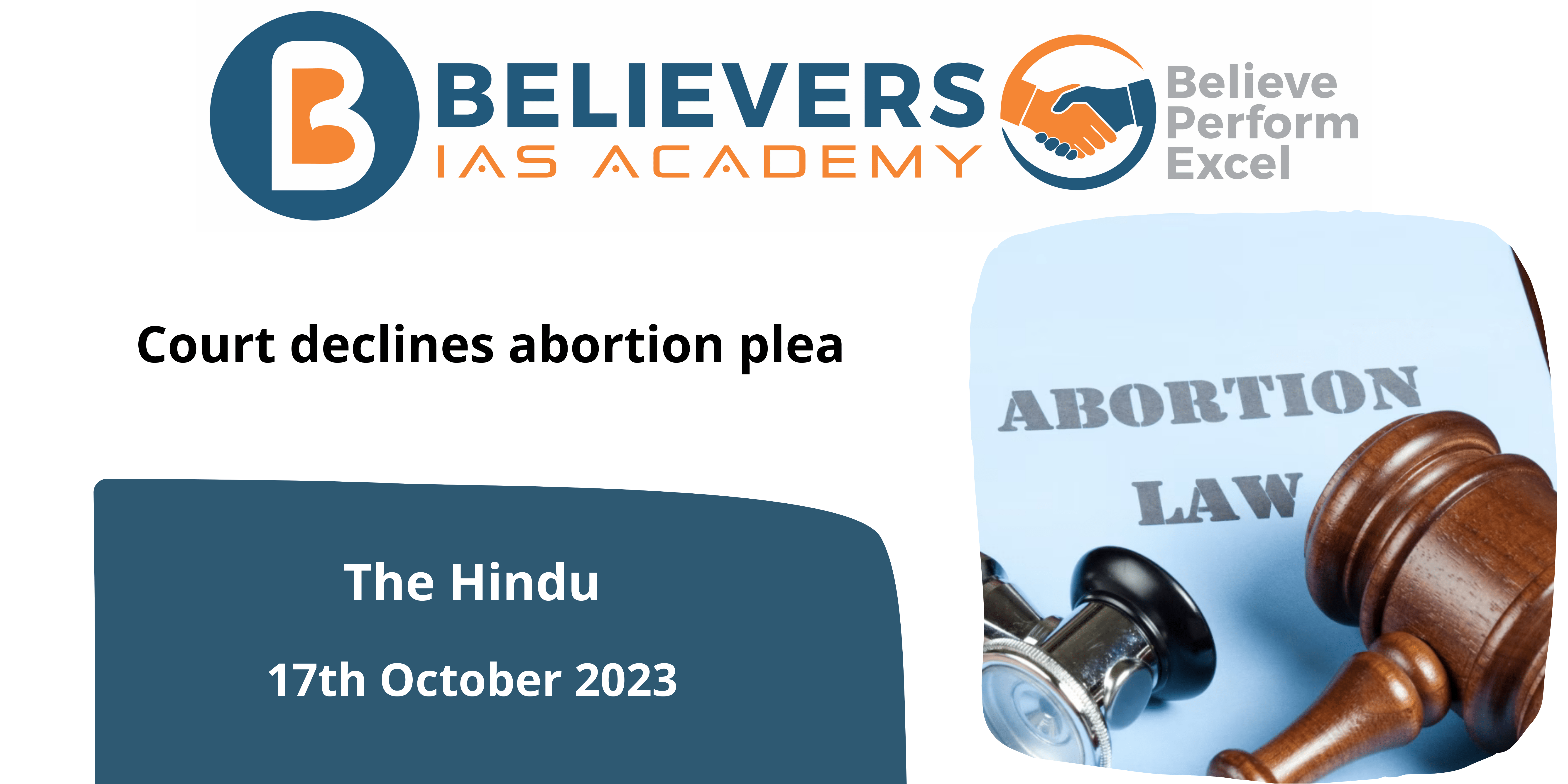Court declines abortion plea
Context
The lady’s request to have her 26-week pregnancy medically terminated was denied by the Supreme Court on Monday. The court stated that it would be inappropriate to grant doctors the order to “stop the heartbeat” of the fetus when there are reports that the woman would give birth to a “viable baby.”
What is the context behind the case in the Supreme Court?
- Request for Late-Term Abortion:
- At 26 weeks into her pregnancy, a married lady requested authorization to have a late-term abortion.
- She contended that she was incapable of carrying, giving birth to, or raising another child due to her physical, emotional, mental, financial, and medical limitations.
- Medical Evaluation:
- After conducting several evaluations, the AIIMS medical board concluded that neither the woman’s life nor the fetus was in urgent danger as a result of her pregnancy.
- In the context of Indian abortion law, the lack of a clear threat to life is a critical criterion.
What is the legal framework behind the abortion laws in India?
- The interpretation of Section 5 of the Medical Termination of Pregnancy Act was at the centre of the lawsuit.
- If a medical termination of the pregnancy is “immediately necessary to save the pregnant woman’s life,” this clause permits it.
- An abortion can only be performed when a woman’s life is in imminent danger, as certified by medical professionals, and this is the main meaning of the term “life” in the context of the legal arguments.
- The Medical Termination of Pregnancy (MTP) Act of 1971 allows registered medical practitioners to terminate certain pregnancies. The law relaxes restrictions on women seeking abortions and on professionals performing them.
- The MTP Act of 1971 permits abortion in the following circumstances:
- There is a chance of severe physical harm during pregnancy.
- The pregnant woman’s mental health is at risk because of the pregnancy.
- The pregnancy results from either rape or a married woman failing to use contraception.
- If two doctors concur, a pregnancy can be ended up to 20 weeks after it begins, and up to 12 weeks if just one doctor feels that way.
What are the Rights of the unborn child as per the court?
- Concerns regarding the rights and welfare of the unborn child were brought up by the case.
- Even if the complete rights don’t apply to feutus but in a way Article 21 is still applicable partially.
- The government contended that the lady had gone over the 24-week abortion limit outlined in the Act and that the fetus was healthy.
- The situation presented a decision between a preterm and full-term delivery, which could have an impact on the health and prognosis of the infant.
What are the ethical issues that are seen in this case?
- Reproductive Autonomy: By claiming her right to control her own body and reproduction, the woman is expressing her independence. Considering how far this autonomy should go raises ethical issues, particularly in late-term pregnancies.
- Fetal Rights: The case raises the moral query of when it is appropriate to acknowledge and defend fetal rights. When does the fetus get rights, and how should those rights be weighed against those of the mother?
- Medical Ethics: One of the main ethical issues is the role of medical practitioners. When asked to perform late-term abortions in situations where there isn’t an immediate danger, doctors may encounter difficulties. It is quite difficult for them to strike a balance between their convictions the institutional policies and their ethical duty to their patients.
- Best Interests of the kid: The best interests of the unborn kid are also a matter of ethics. When weighing the chances of a good outcome with a full-term delivery against the possible risks of a preterm delivery, which is better for the child’s wellbeing?
- Equity and Justice: Whether late-term abortions should be permitted in rare circumstances or if the law should be strictly interpreted to apply to every person equally, regardless of their circumstances, raises issues of justice and fairness.
Conclusion
In conclusion, this case concerns a woman’s request for a late-term abortion. The primary legal issue is whether or not the woman’s circumstances, particularly the urgent threat to her life, fit the requirements for an abortion as defined by the Medical Termination of Pregnancy Act. It also touches on international legal viewpoints on the subject and poses more general questions regarding the rights and welfare of unborn children. The case highlights the difficult moral and legal conundrums that develop in these circumstances.




